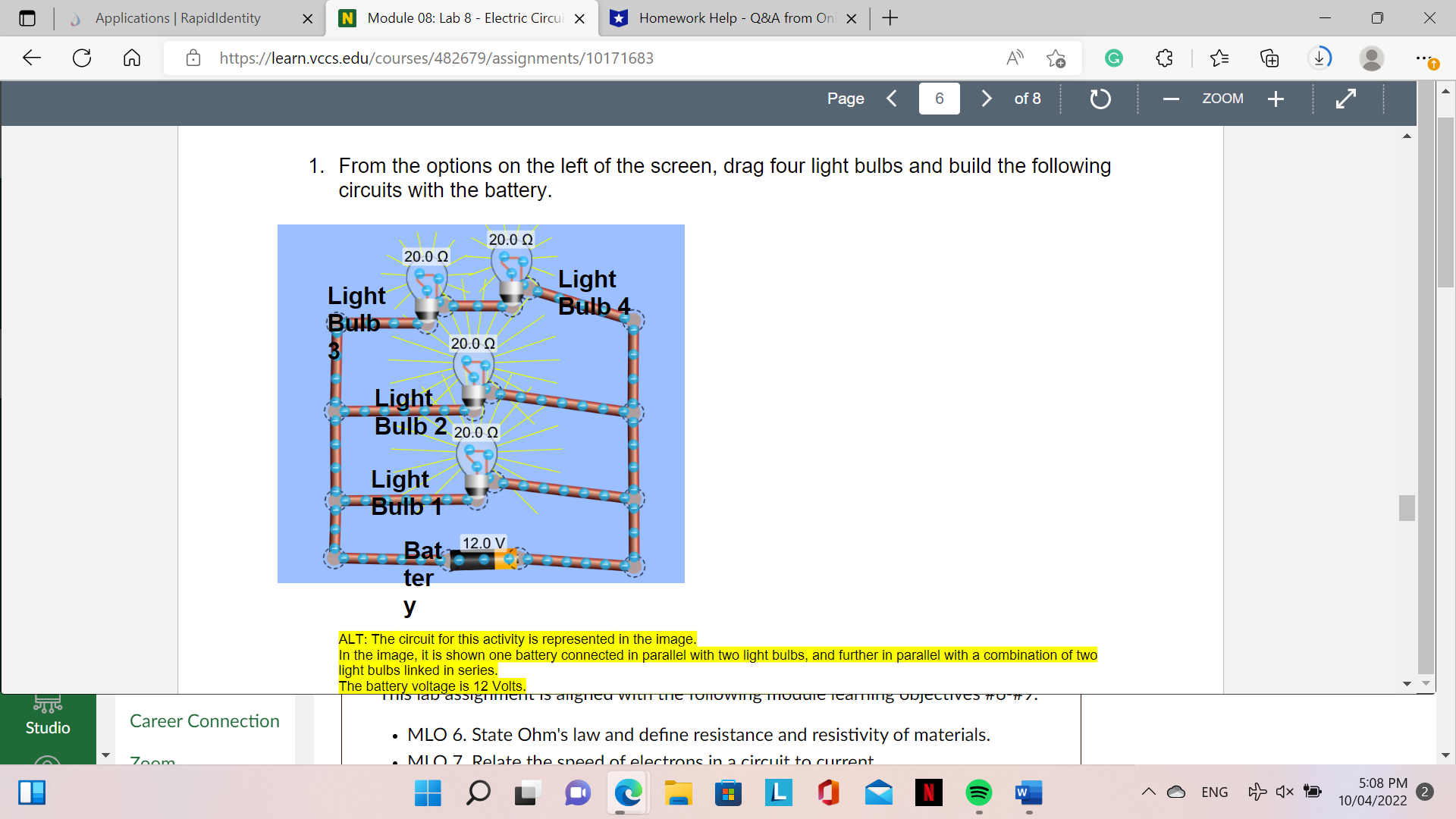Question
Circuits Name__________________ This Lab uses the PhET simulation Circuit Construction Kit AC. Each lab counts for 20 points and it is about 1.42% of the
Circuits Name__________________ This Lab uses the PhET simulation Circuit Construction Kit AC. Each lab counts for 20 points and it is about 1.42% of the total grade, each little point counts, do not miss it! Introduction Current is a flow of charged particles, in metal wires the conduction electrons make up the flow of charges. The charges are moving because there is a potential difference. The current is measured in Amperes (A), the potential difference across a circuit element is called voltage and it is measured in Volts. A complete, closed path where electrons can flow is called a circuit. Current in the circuit passes through electrical devices, typical electrical devices are resistors, capacitors, inductors, diodes, LED, etc... In these activities you will work on circuits with resistors or traditional light bulbs. You will work with series and parallel connections of resistors or light bulbs. The last activity is dedicated to alternating current. Important formulae and assumptions for all activities. 1. When the elements in a circuit are connected in series, the same current passes through all elements which are in series. 2. When the elements in a circuit are connected in series, the sum of all voltages across each element adds up to the voltage provided by the power source in the circuit (battery or generator). 3. When the elements in a circuit are connected in parallel, the current is different for each element and the respective values add up to the total current drawn from the battery. 4. When the elements in a circuit are connected in parallel with each other, the voltage is the same for each element. 5. Power is the energy over time for a circuit element. The voltage, the current, and the resistance are linked by Ohm's law, which is Voltage = Resistance equivalent current = ?? V = RI Elaborating this equation we can also find the current as I = V R or the resistance as R = V I . If resistors are connected in series, the total resistance, also called equivalent resistance is
2/8 Requivalent = R1 + R2 + R3 + R4 + .... If resistors are connected in parallel, the total resistance, also called equivalent resistance is Requivalent = (1/R1 + 1/R2 + 1/R3 + 1/R4 + ...) -1 The power is measured in SI units as Watts and it is equal to Power = voltage current = VI where V is the potential difference across the circuit element and I is the current flow through it. Activity 1 Series circuit Video description of the available tools on the simulation Activity 3 Electric Power and compound circuit (5.5pts) In section 8.9 of our book, there is a Screencast called "Car battery power" explaining about a compound circuit with a car battery and four light bulbs. In this activity, you will build a similar circuit. Remember that power is measured in watts and that it is equal to Power = voltage current = VI 1. From the options on the left of the screen, drag four light bulbs and build the following circuits with the battery.

Step by Step Solution
There are 3 Steps involved in it
Step: 1

Get Instant Access to Expert-Tailored Solutions
See step-by-step solutions with expert insights and AI powered tools for academic success
Step: 2

Step: 3

Ace Your Homework with AI
Get the answers you need in no time with our AI-driven, step-by-step assistance
Get Started


